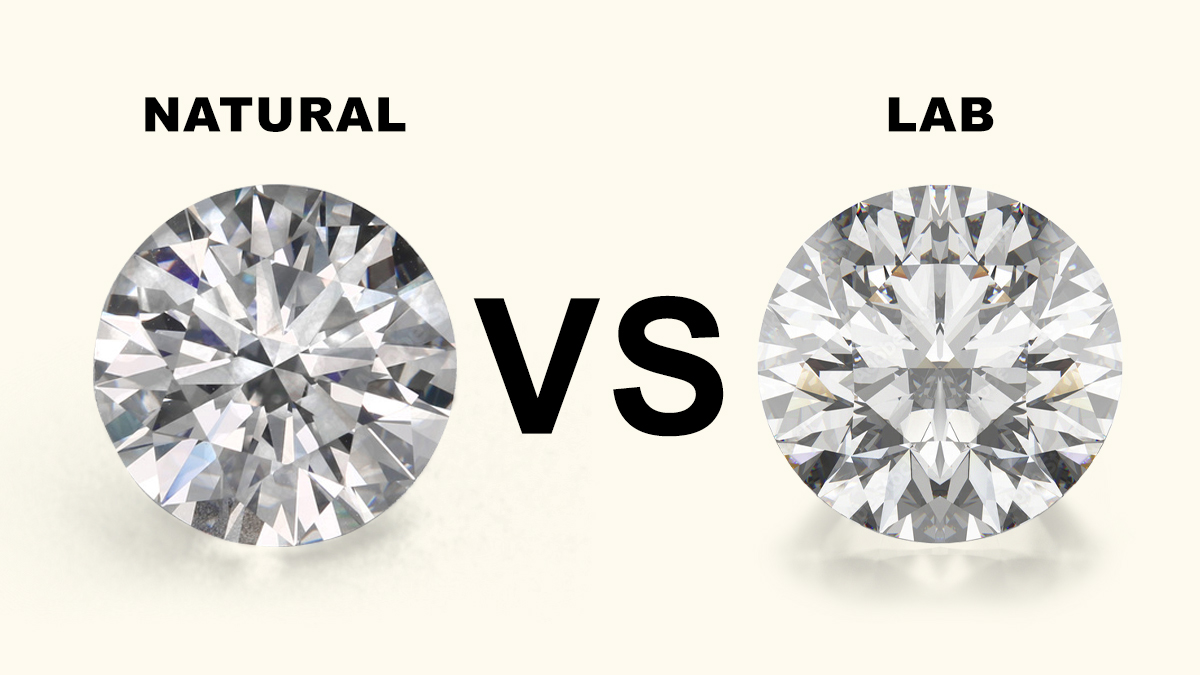Lab grown diamonds are identical to natural diamonds in terms of chemical, physical, and optical. Lab-created diamonds have become increasinLab grown diamonds have become increasingly popular in recent years. This is due to advances in technology and changes in customer preferences. Lab grown diamonds are much more common than a decade ago. However, people still have many concerns about these man-made stones.
People often ask about the legitimacy of lab-grown diamonds. How can they be distinguished from natural diamonds?
Why would someone choose a lab-grown diamond over a natural one? These are common questions. We have included answers to questions about diamonds and lab-grown diamonds in our FAQs. This will help clear up any confusion and help our readers make informed decisions when purchasing.
What is Lab Grown Diamonds?
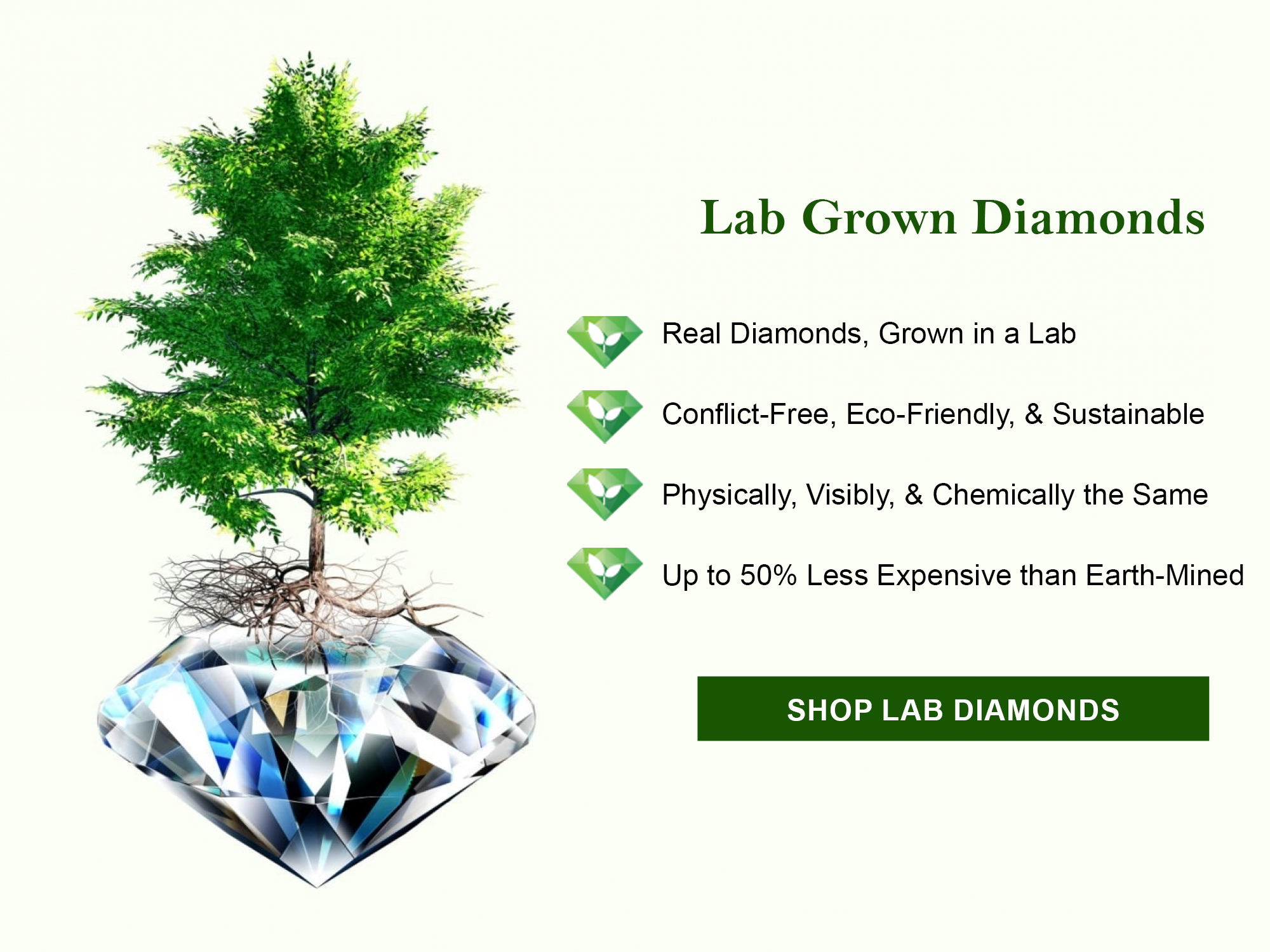
Lab-grown diamonds are synthetic diamonds produced by scientists in a highly controlled lab setting. Lab-grown diamonds have the same chemical makeup, carbon atom structure, optical characteristics, and physical characteristics as natural diamonds. They are therefore as stunning and durable to mined diamonds. Natural and lab-grown diamonds are identical in all respects except for how they are formed.
How are Lab Grown Diamonds Made?
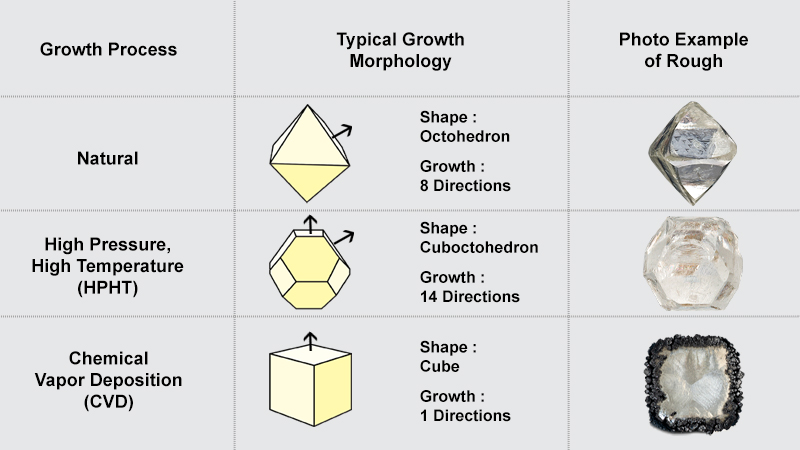
Two processes are often used to make lab-grown diamonds: high-pressure, high-temperature (HPHT) and chemical vapor deposition (CVD).
The HPHT process mimics how diamonds naturally grow deep within the Earth's crust. This technique involves placing a tiny diamond crystal in a confinement chamber and exposing it to just carbon. Carbon melts when exposed to extreme temperatures and pressures. This forms a lab-grown diamond around the diamond seed.
A diamond seed is also initially inserted into a chamber when scientists utilize the CVD technique. The chamber is heated to a very high temperature.
It is then filled with a gas rich in carbon. Lasers or microwaves are used to ionize it. Pure carbon separates from the carbon-rich gas. It layers around the diamond seed, creating a lab-grown diamond.
Are Lab Grown Diamonds Less Expensive Than Natural Diamonds?
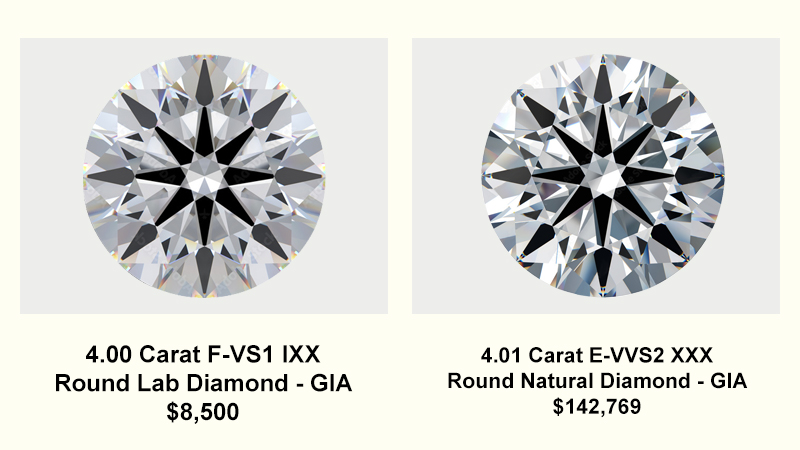
Yes. Due of their reduced cost, many consumers prefer to purchase lab-grown diamonds over real diamonds. Natural diamonds typically cost about 40% more than lab created diamonds.
You don't need to spend a million dollars to adorn yourself with the diamond jewelry of your dreams. Want a larger diamonds cut, more brilliant, and high-quality diamond at a lower cost? Buy lab grown diamonds.
Natural diamonds are extremely rare, which is why they cost so much. And that is what major diamond sellers would like you to think.
Is a Lab-Grown Diamond a Fake or a Diamond Simulant?
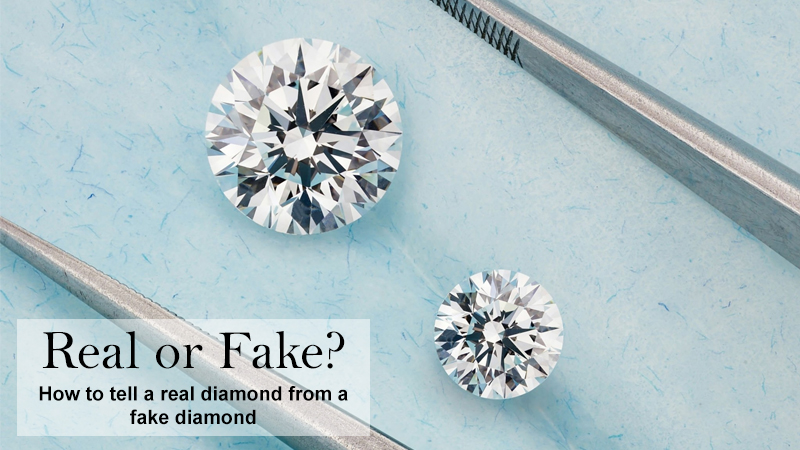
Lab grown diamonds are real diamonds. They are man-made diamonds manufactured in a laboratory. They are not diamond simulants. Simulants include materials like cubic zirconia, which are meant to look like diamonds but are not real.
Diamond simulants might look to the naked eye to be real diamonds, but they are not as strong or brilliant. As an alternative, diamonds made in a laboratory are just as real as those that formed millions of years ago. In addition, lab-grown diamonds are real because they have the same physical, chemical composition as natural diamonds.
Are Lab Created Diamonds Durable for an Engagement Ring?
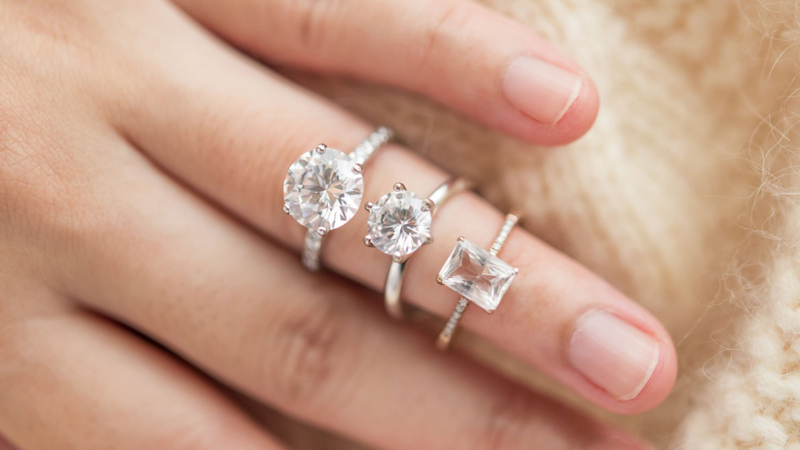
Do you prefer a lab-created or natural diamond? We understand that couples may feel a stigma when searching for a lab grown diamond engagement ring. This stigma is due to lab diamonds not being considered "real".
Lab grown diamonds are identical to natural diamonds. They offer the same beauty, durability, and brilliance. Plus, they are much cheaper.
They come in many sizes and diamond shapes. They can match any setting, from simple to elaborate. They can be the classic bright white, or come in a range of other colors.
It is true that lab created diamonds are strong enough to be used in an engagement ring. Lab-created diamonds achieve a flawless 10 out of 10 on the Mohs mineral hardness scale. This means that they are harder than all other gemstones, with the exception of mined diamonds, which are equally hard. Other gemstones include sapphires, rubies, moissanite, morganite, emeralds, and more.
Engagement rings that score 9 or higher on the Mohs scale are usually advised by jewelers due to their daily wear. Lab-created diamonds easily surpass this standard with a perfect score of 10.
Reasons to Choose Lab Grown Diamonds
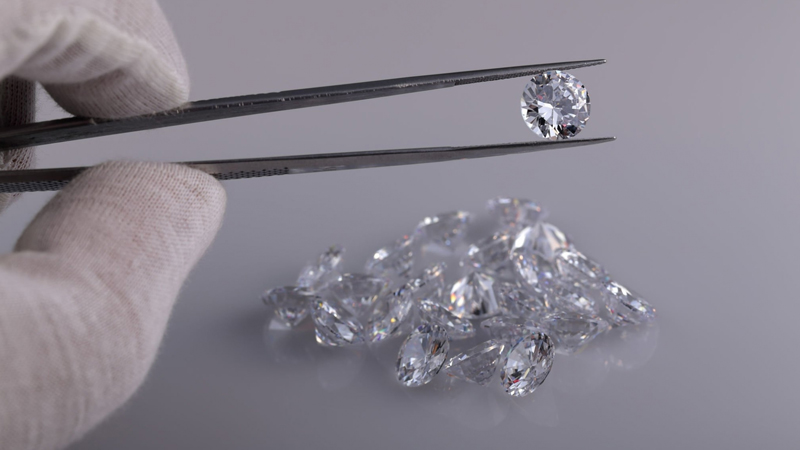
1. Reasonably Priced
1 carat lab diamond will cost between $450 and $1200, giving you plenty of room to upgrade your engagement ring. To comparison, an identical natural diamond will run you between $4,000 and $9,000.
It is true that choosing a lab diamond can help you to upgrade your stone without spending too much. You can increase its quality, size, or add accent stones and design features to your engagement ring. Alternately, you may use that additional money to pay for your wedding location, wedding rings, or perhaps a fantasy beach honeymoon.
2. Ethical and Sustainable
When looking for an engagement stone, many couples are looking for more than simply beauty and value. They want something ethical and sustainable that preserves Mother Earth in the same condition as when we discovered it. Fortunately, couples wishing to reduce their influence on the environment and ethical standards can choose lab-created diamonds!
In a solitaire engagement ring made of yellow gold, a magnificent round lab-created diamond sparkle brilliantly.
Lab diamonds are environmentally friendly. They have a smaller environmental impact than natural diamonds.
Furthermore, they are more sustainable as they require less water and energy to create. There is no need to worry about human rights issues. Lab diamonds do not require good working conditions for those involved in their manufacturing and selling. With lab diamonds, you may choose your engagement ring without stressing out about the ethical or environmental impacts of your decision.
3. Lab-grown Diamonds Look Like Natural Diamonds
Lab-grown diamonds are difficult to distinguish from real diamonds. Most people are unaware that they look similar. Only geologists with extensive training and expertise, using rigorous testing, can distinguish between naturally occurring diamonds and lab-grown diamonds. When compared to natural diamonds, lab-grown diamonds have the same molecular structure, physical, and chemical characteristics.
4. Lab-grown Diamonds Are Conflict-free
The environmental impact of mining natural diamonds has become a major concern for many individuals. The extraction process has been known to cause harm to both the environment and human life. However, lab-grown diamonds are considered conflict-free and less controversial due to their production process and origin.
Do Diamond Grading Reports Come with Lab Created Diamonds?
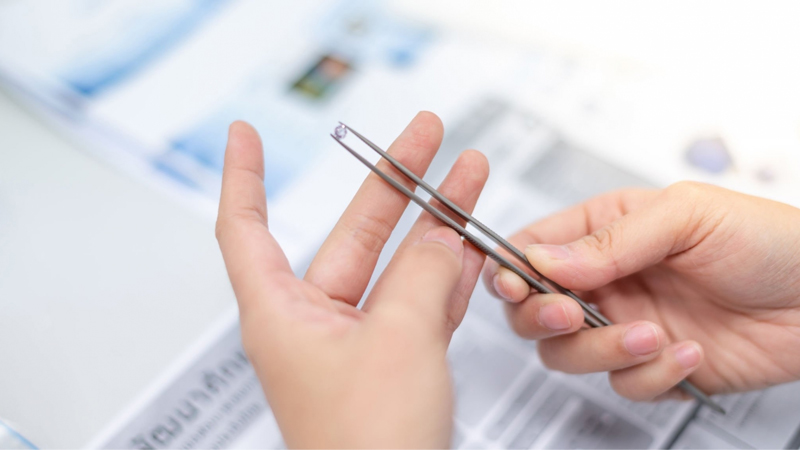
The 4Cs of diamond quality are color grade, clarity grades, cut and polished, and carat weight. These are described in a diamond grading report. This report is also known as a "diamond certificate," diamond laboratory report, diamond dossier, or diamond light performance report. This report can be used to identify a specific diamond, much like an ID card.
There is a widespread misperception that leaders in the diamond industry won't grade lab grown diamonds. Lab-created diamonds can have diamond grading reports. Top grading labs like the GIA and IGI routinely provide these reports. Therefore, lab-grown diamonds can absolutely have diamond grading reports.
Conclusion
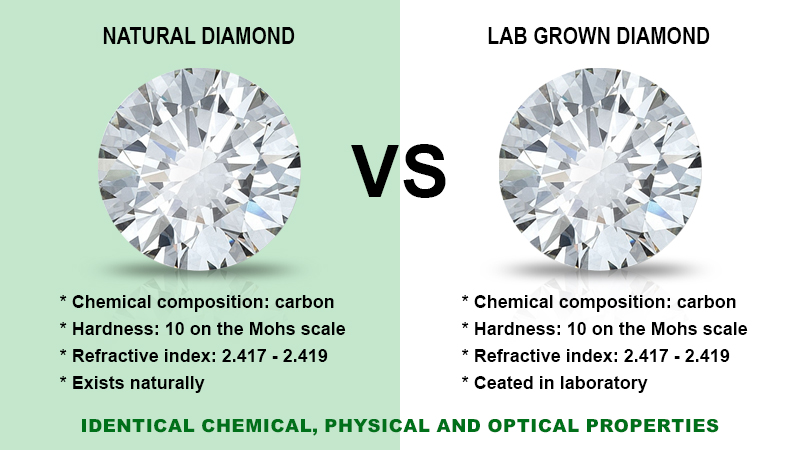
Synthetic diamonds have the same physical and chemical characteristics as diamonds found in nature. This makes them impossible to differentiate from genuine diamonds. They are often regarded as more ethical and environmentally friendly than real diamonds because they are grown with advanced technology.Artificially made diamonds are now cheaper, which has caused concern among people. This is because diamonds have traditionally been seen as a valuable investment. But neither a lab grown nor a natural diamond is a wise financial investment.
In that they lose value as soon as you buy them, diamond investments are like vehicle investments. Both artificially produced and authentic diamonds may be resold for a lower price than the initial purchase cost.
Companies are going to buy the diamonds back, but they're going to give you a lot less money. Although diamonds may not yield financial gains, they are a valuable way to express affection and commitment. Invest in love.The lower cost of artificial diamonds worries people who see them as a worthwhile investment. Diamonds are not a financial investment, but they are a wonderful way to demonstrate love and dedication that will last forever.
Depending on what you're looking for, natural and lab grown diamonds both have something to offer. A mined diamond could be ideal for you.
Its rarity and beauty come from forming deep within the earth over billions of years. A lab-grown diamond may be the right choice for you.
It is a scientific miracle to generate diamonds in a lab. Additionally, they often cost less than natural diamonds. You can't go wrong either way! Hence there are many benefits of lab grown.

